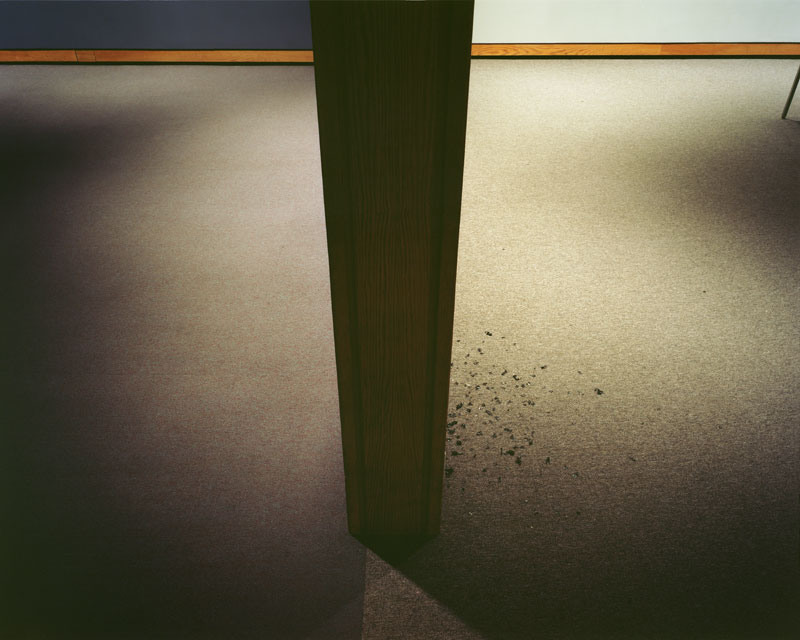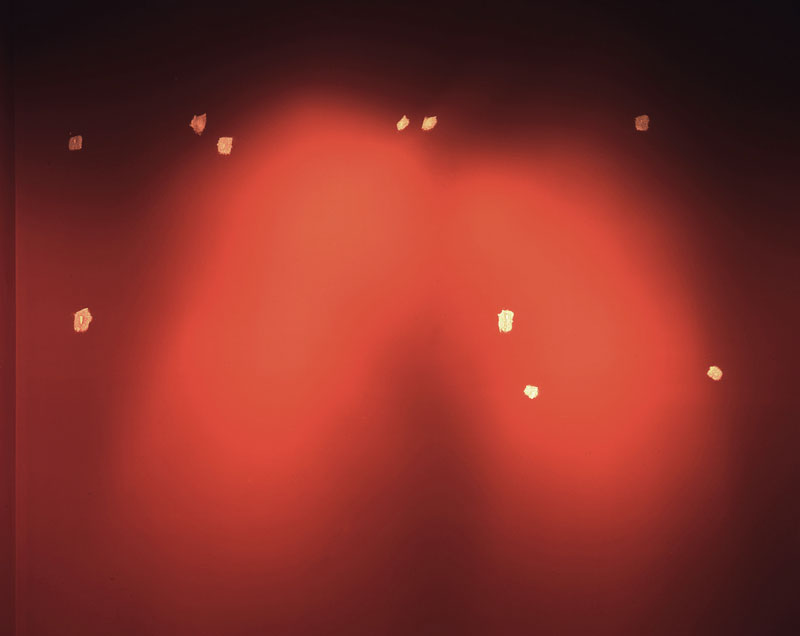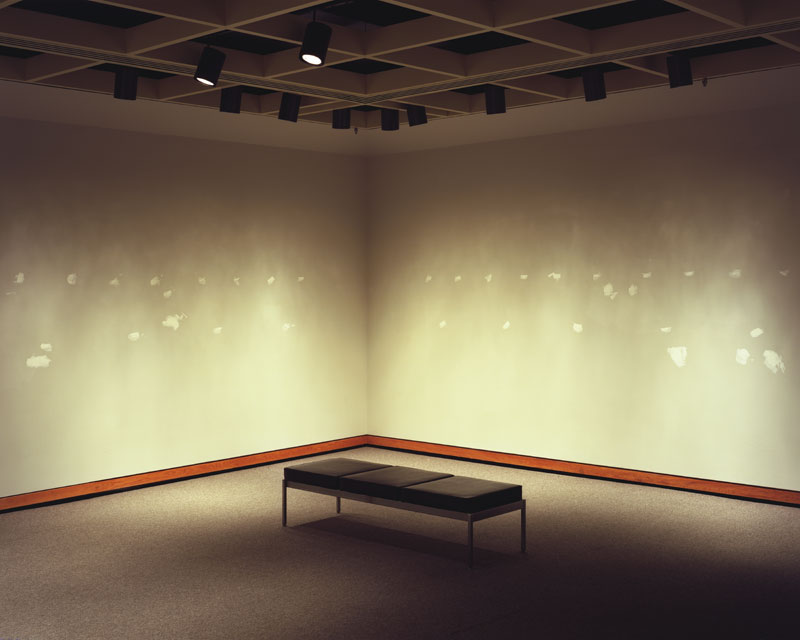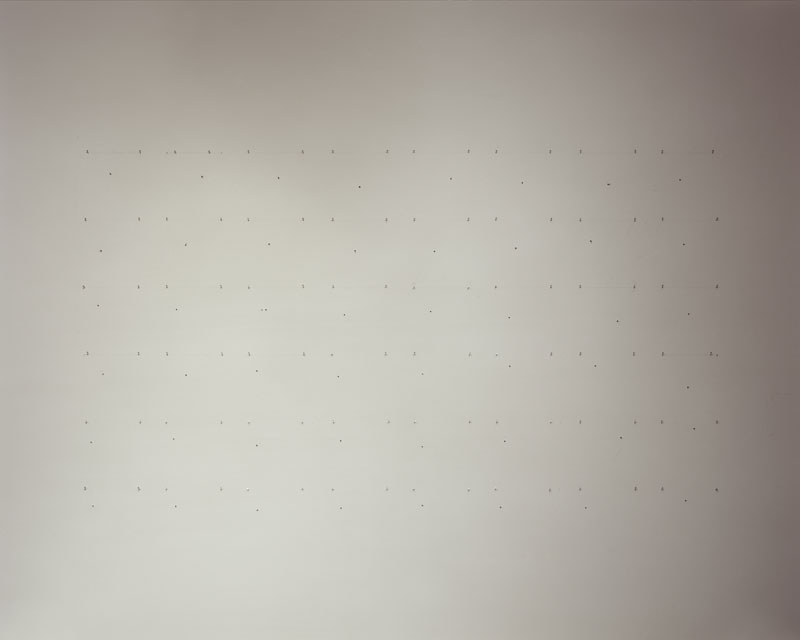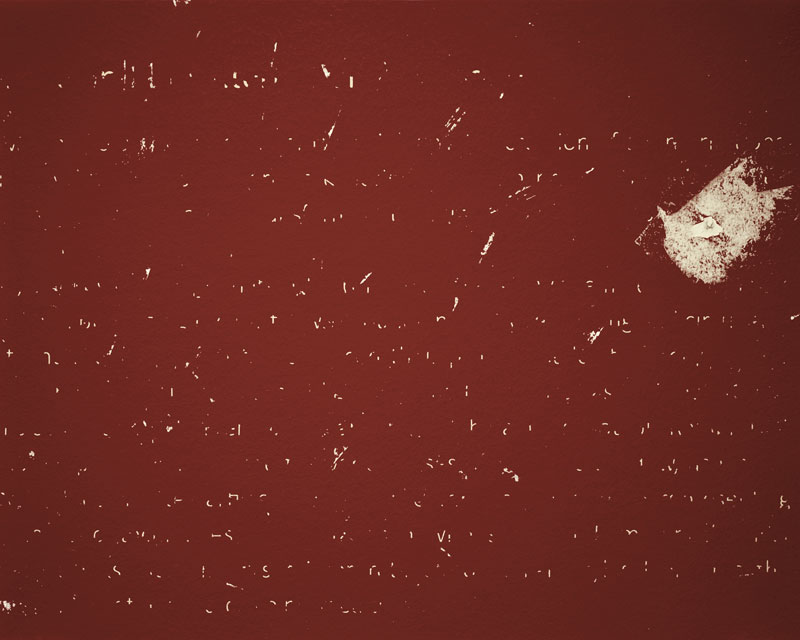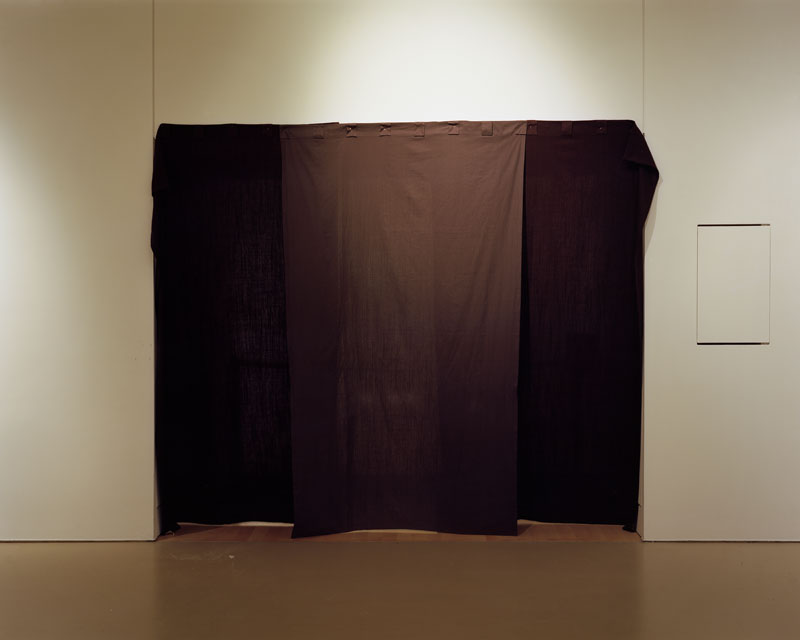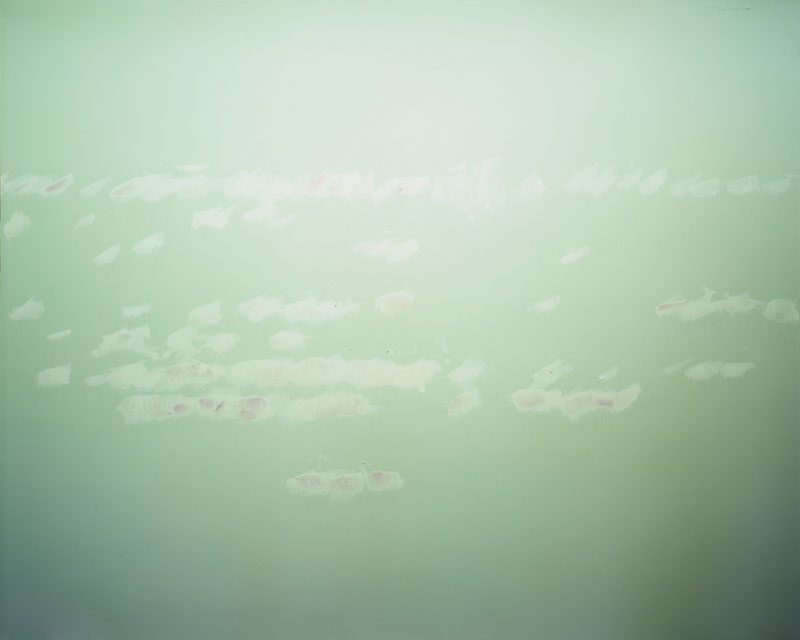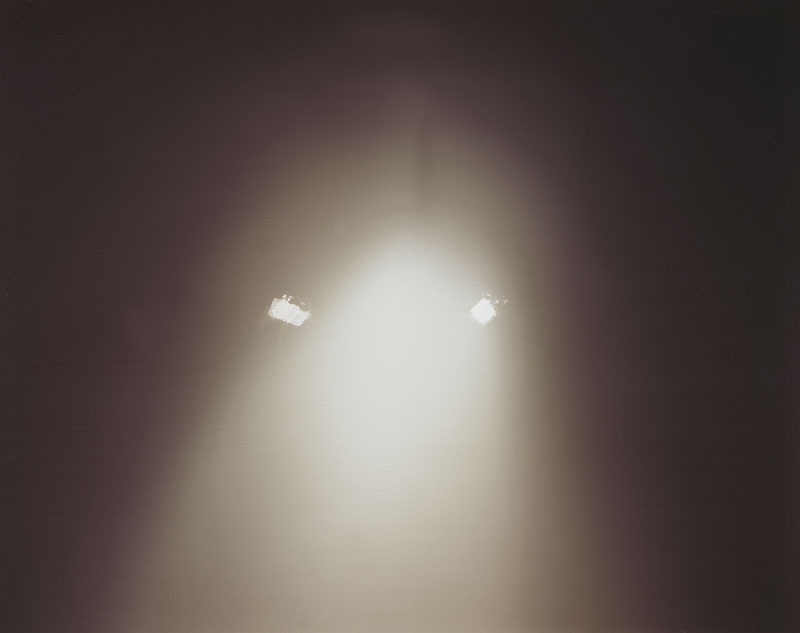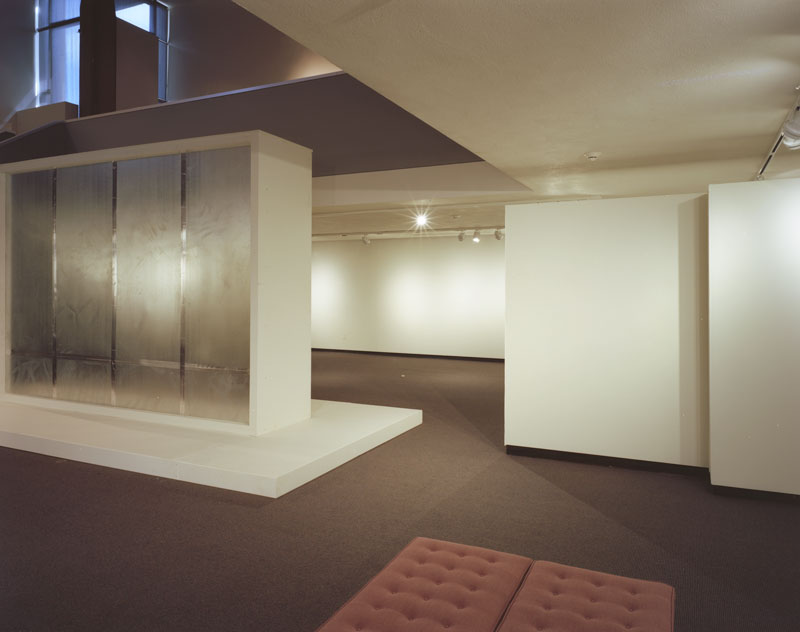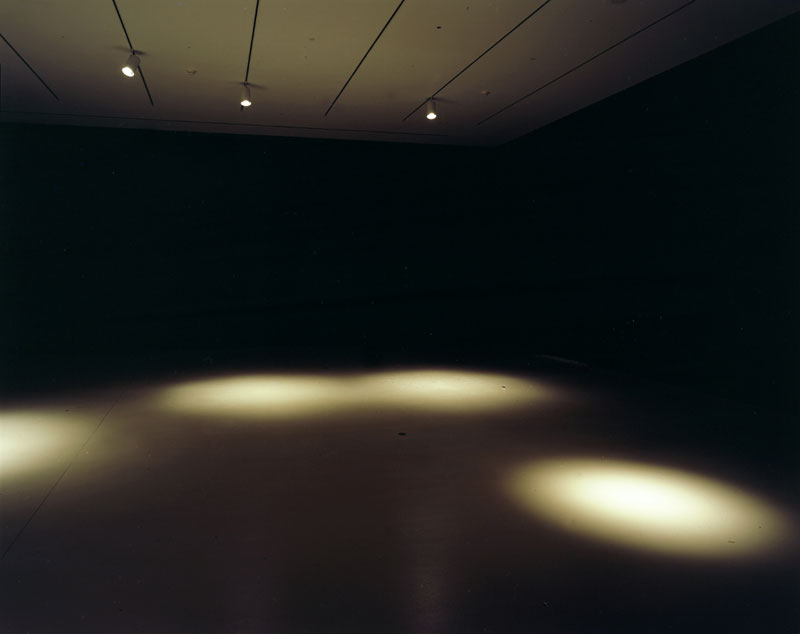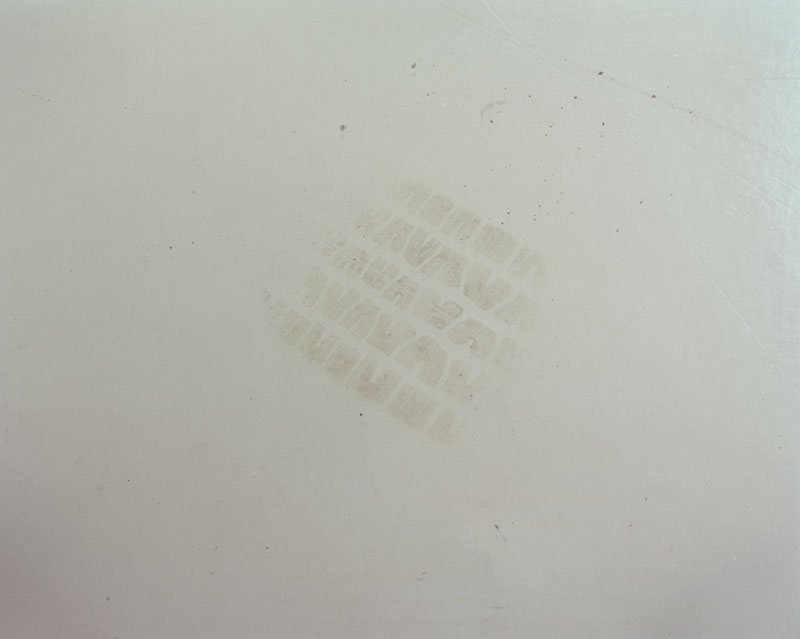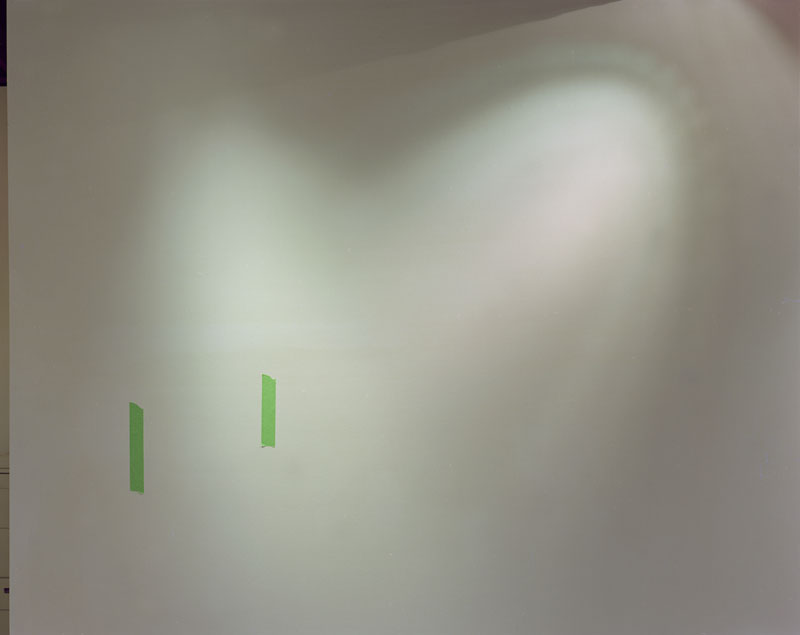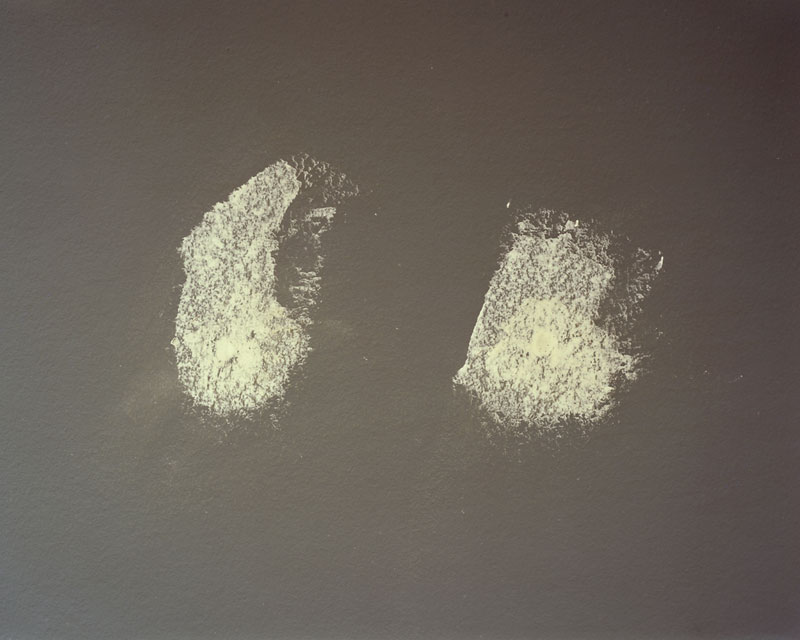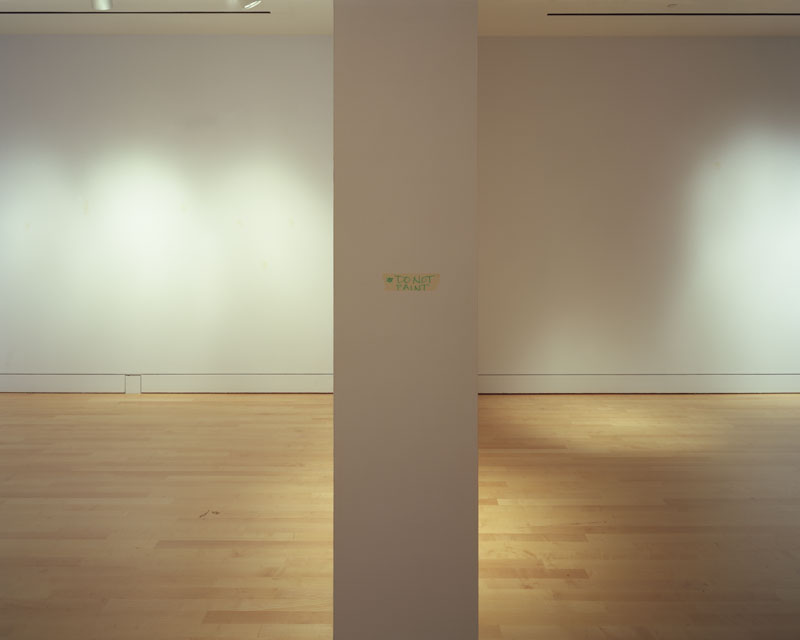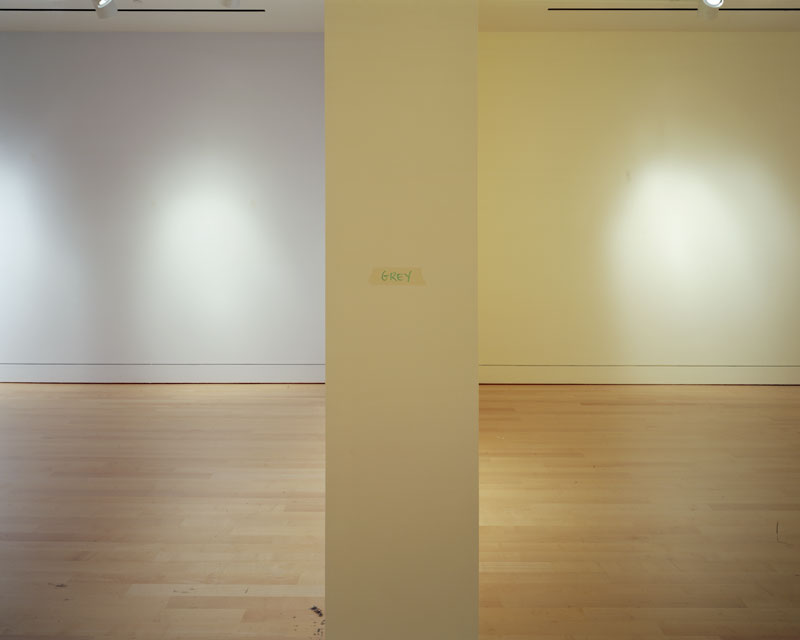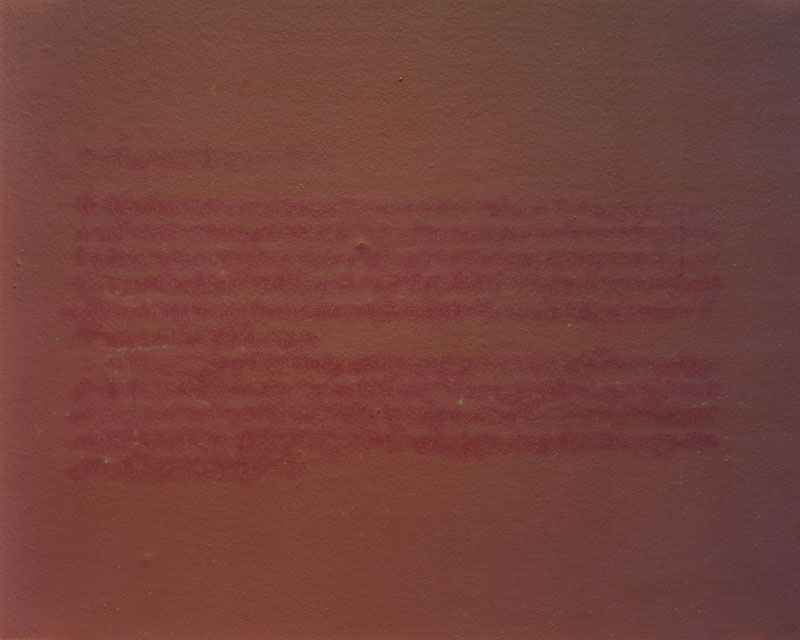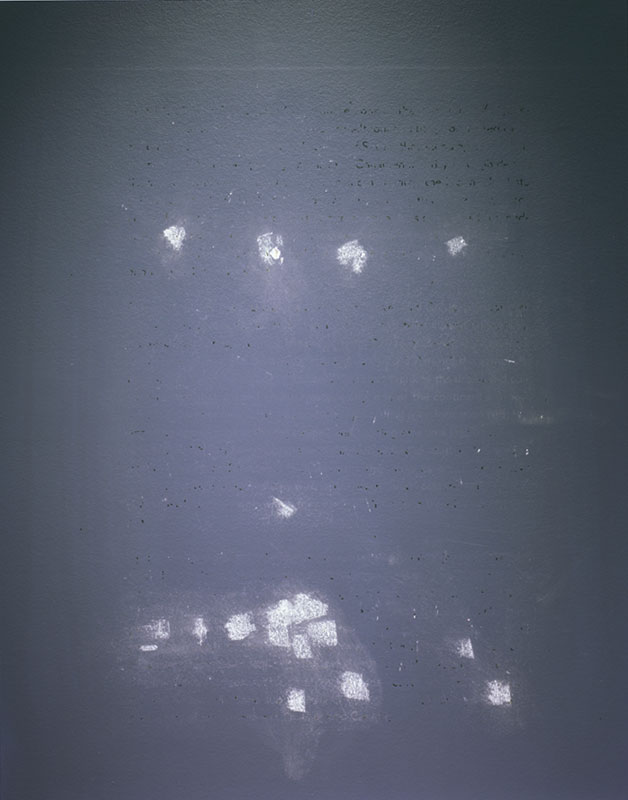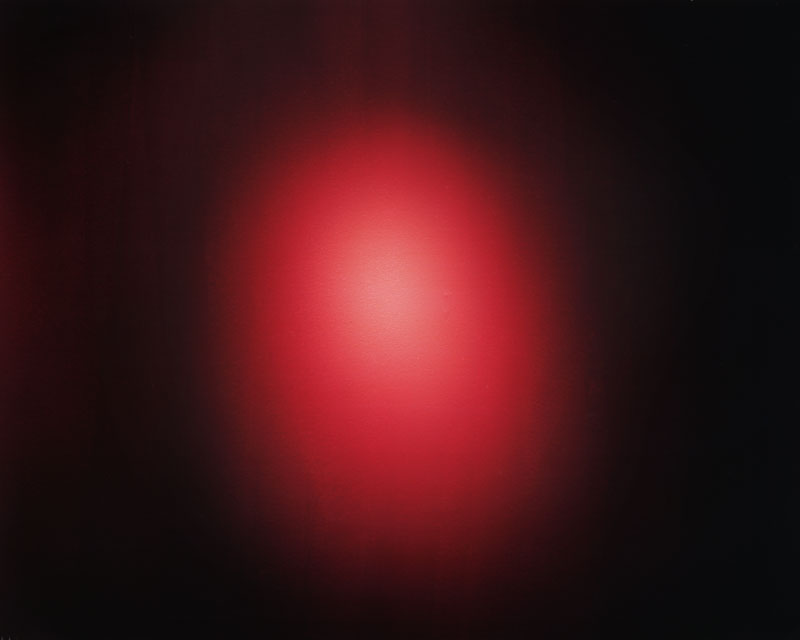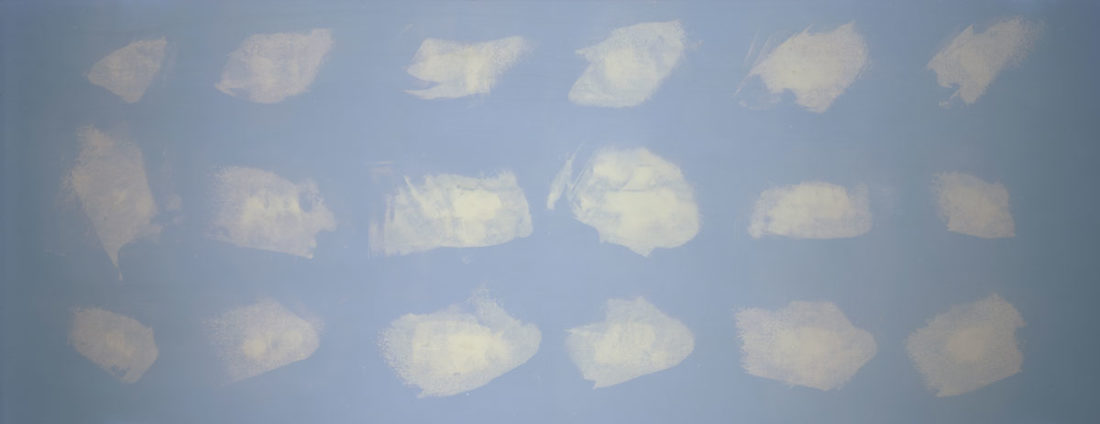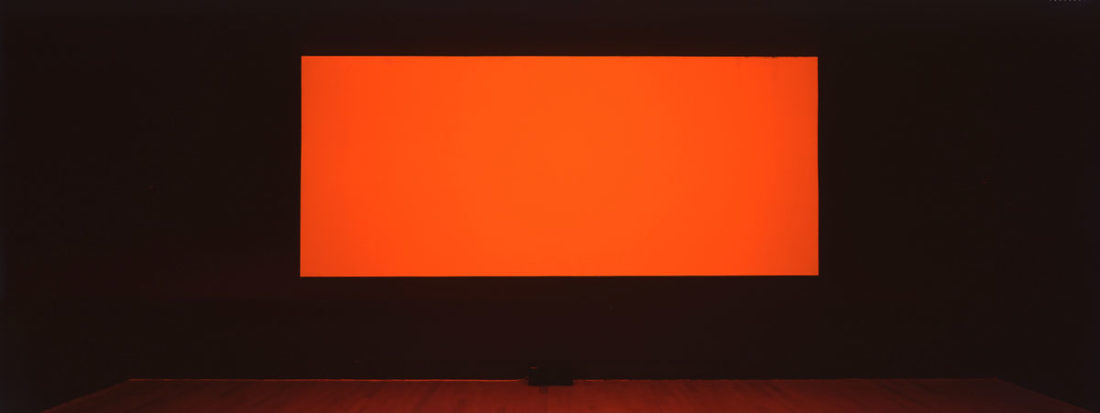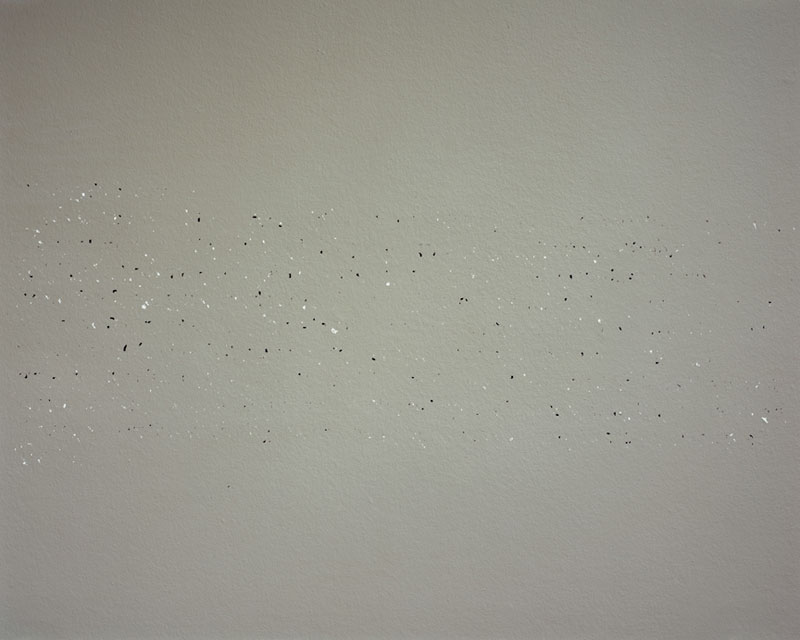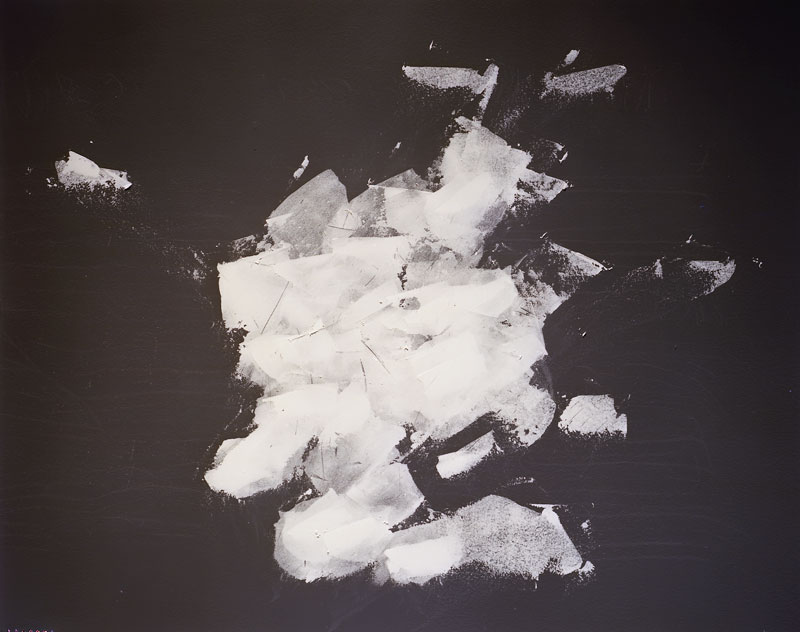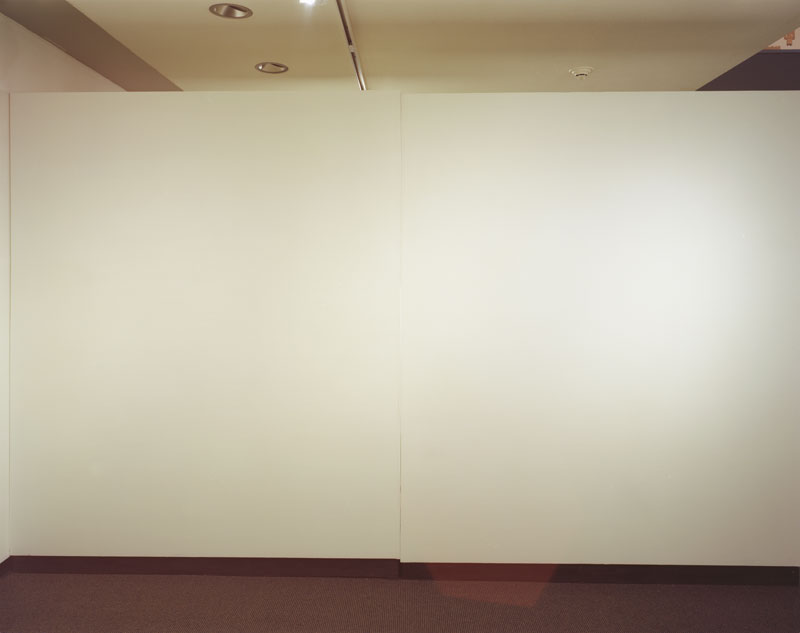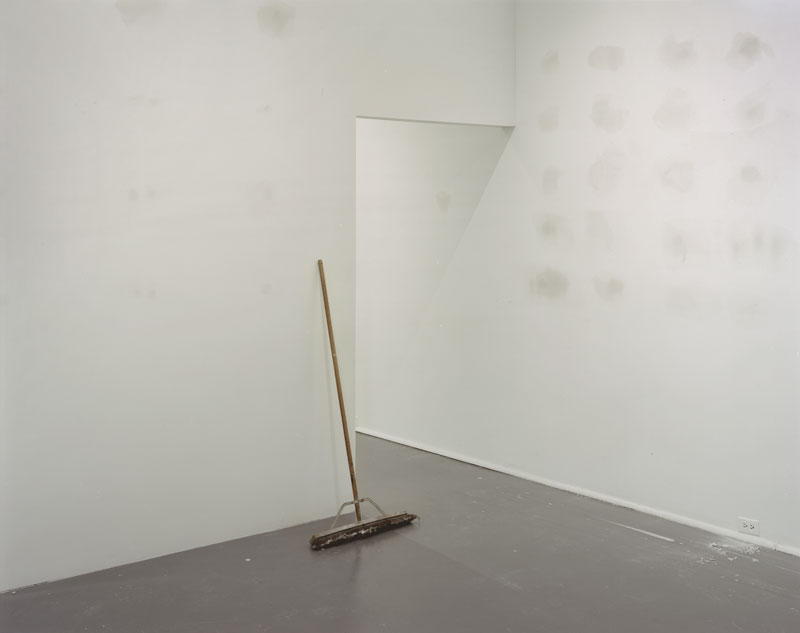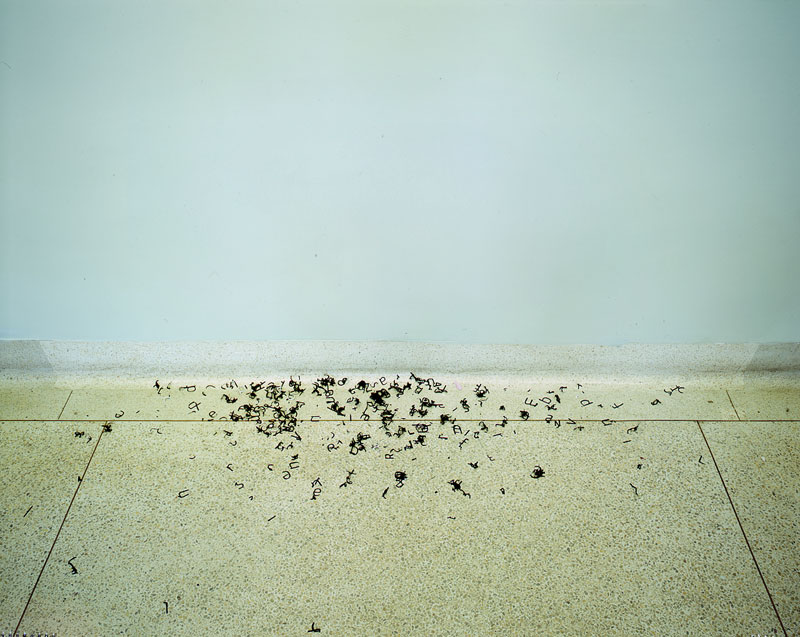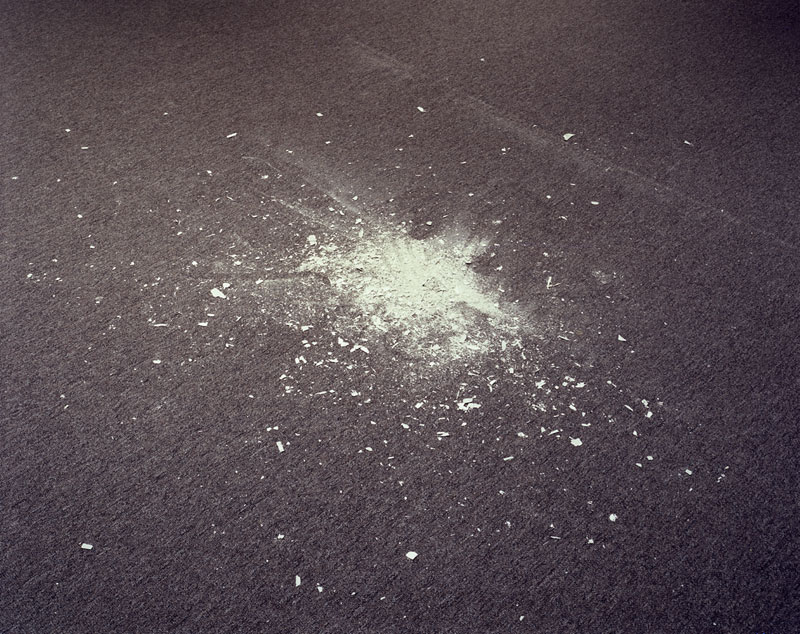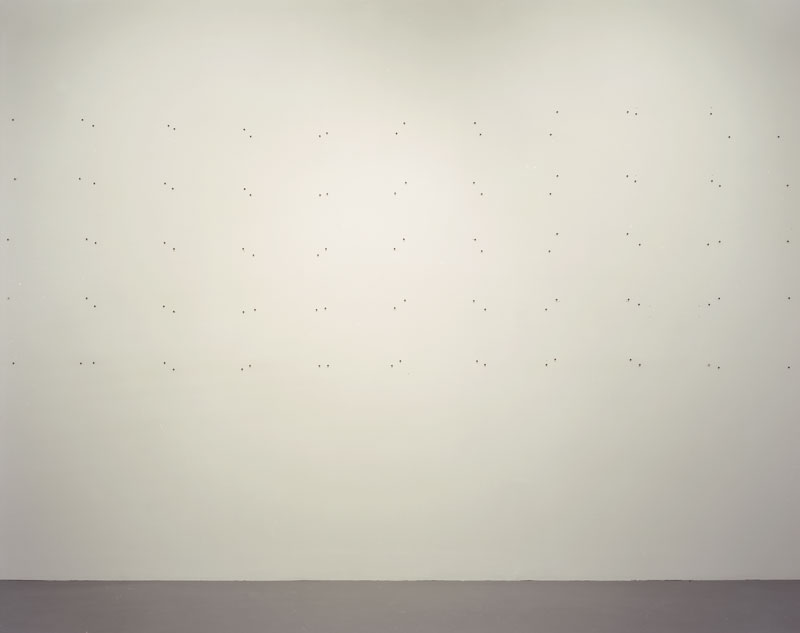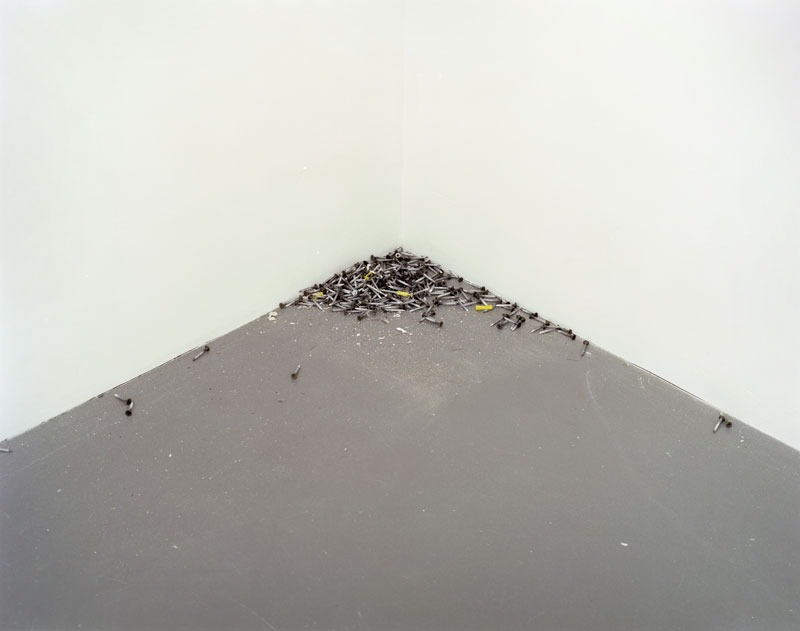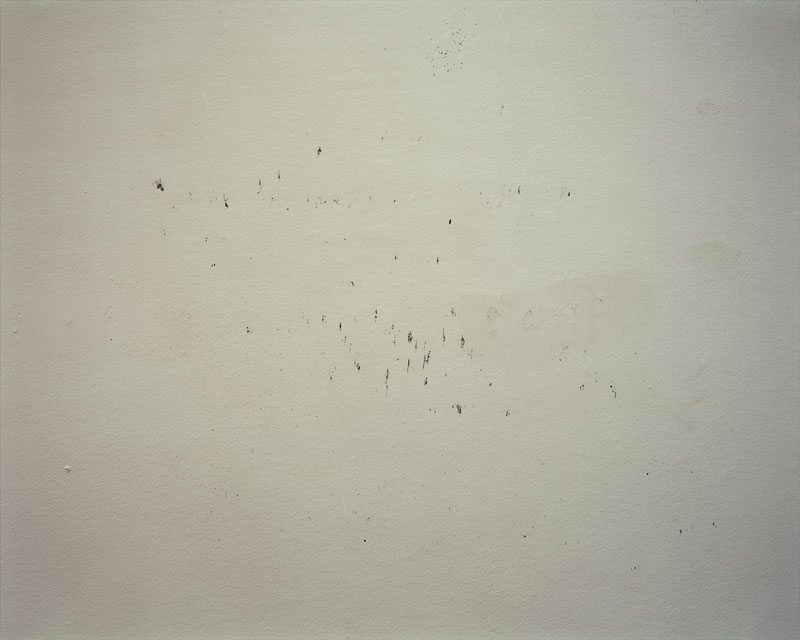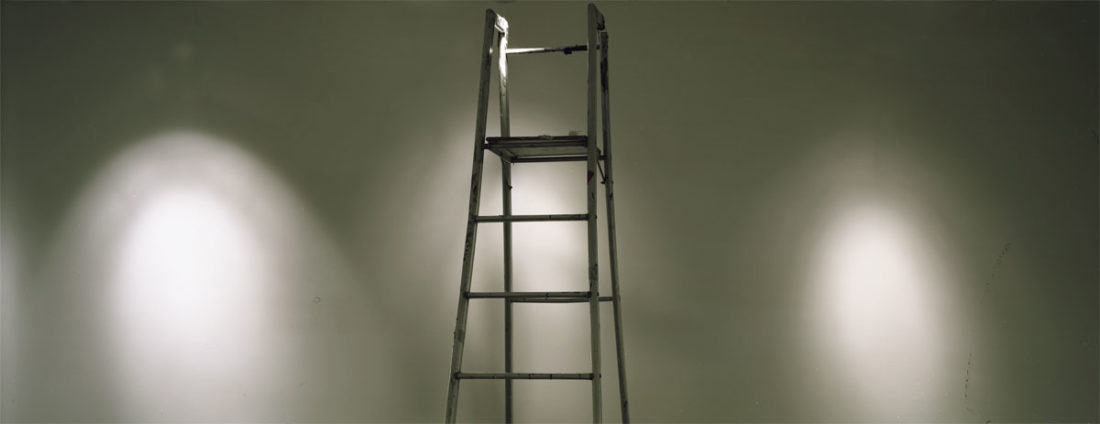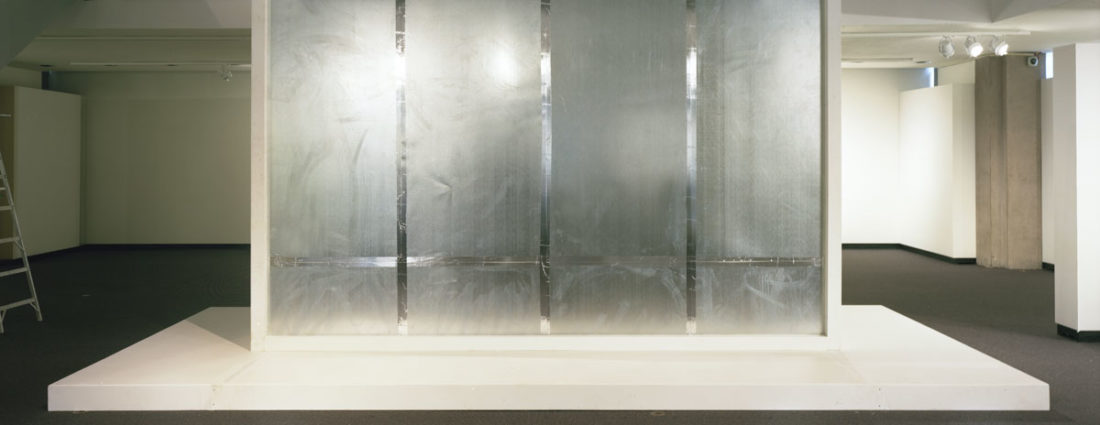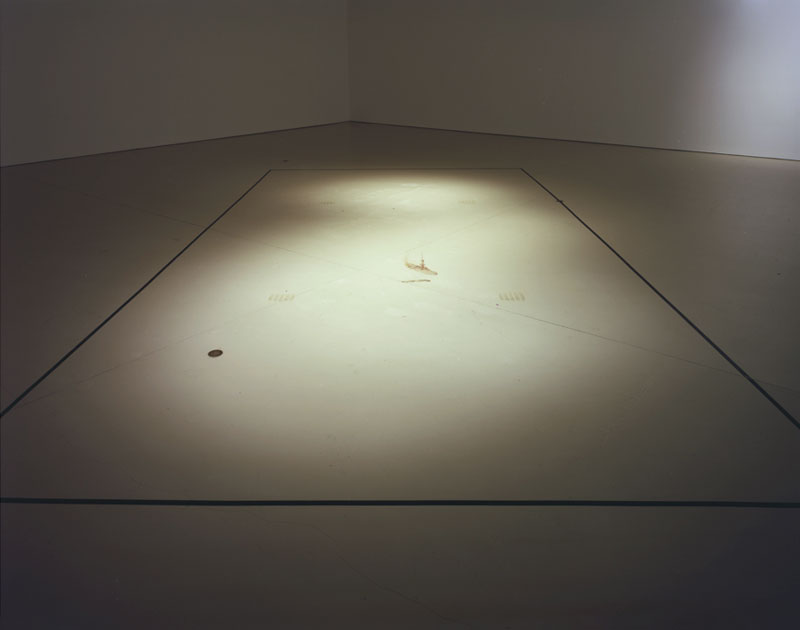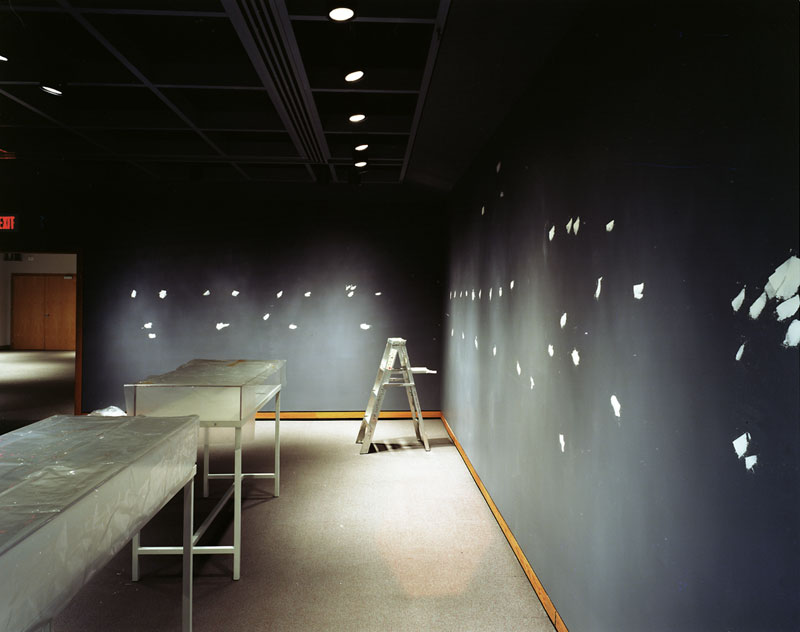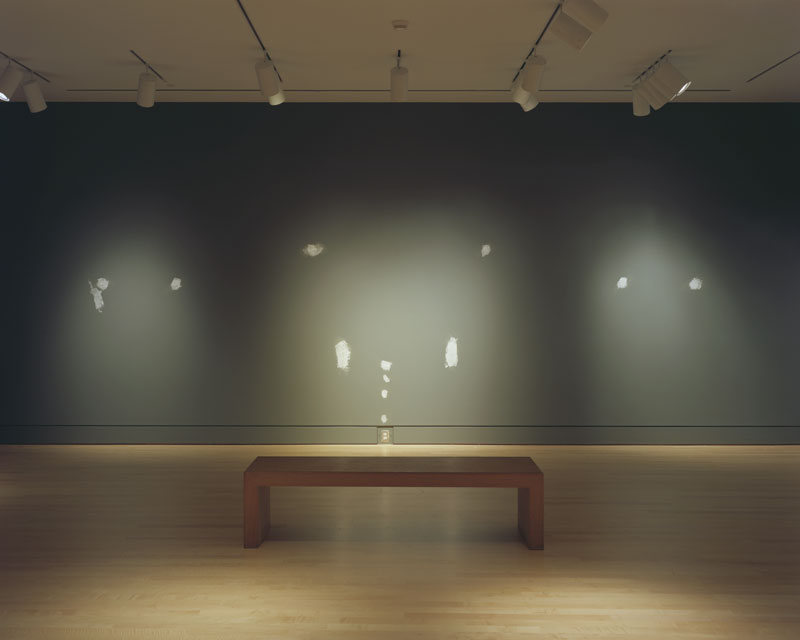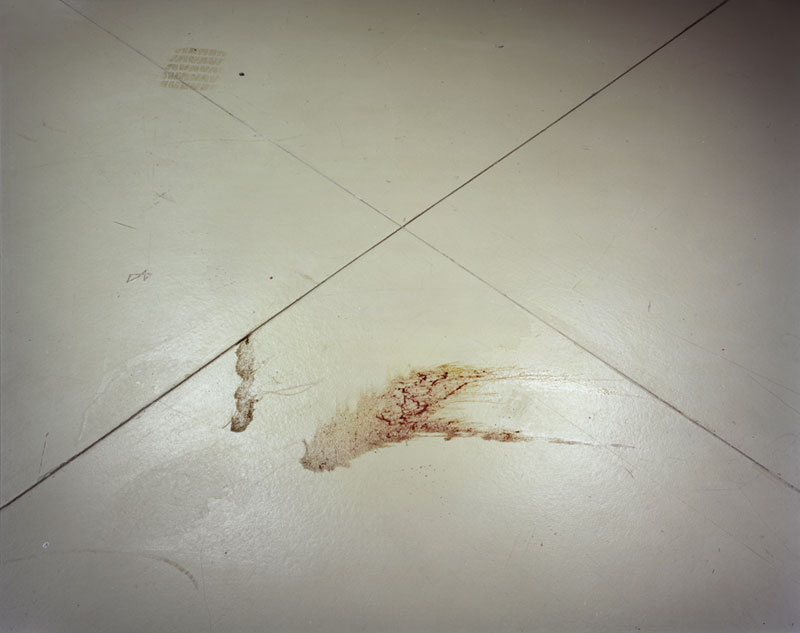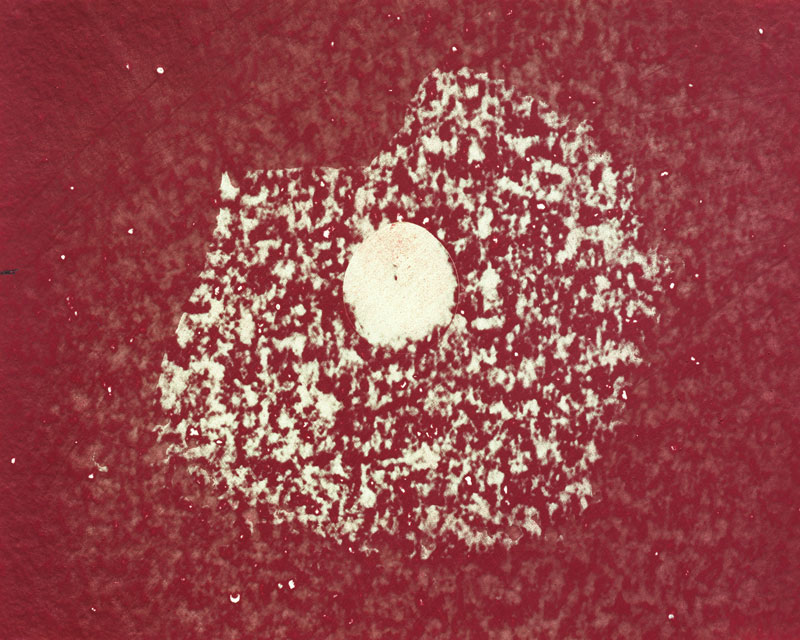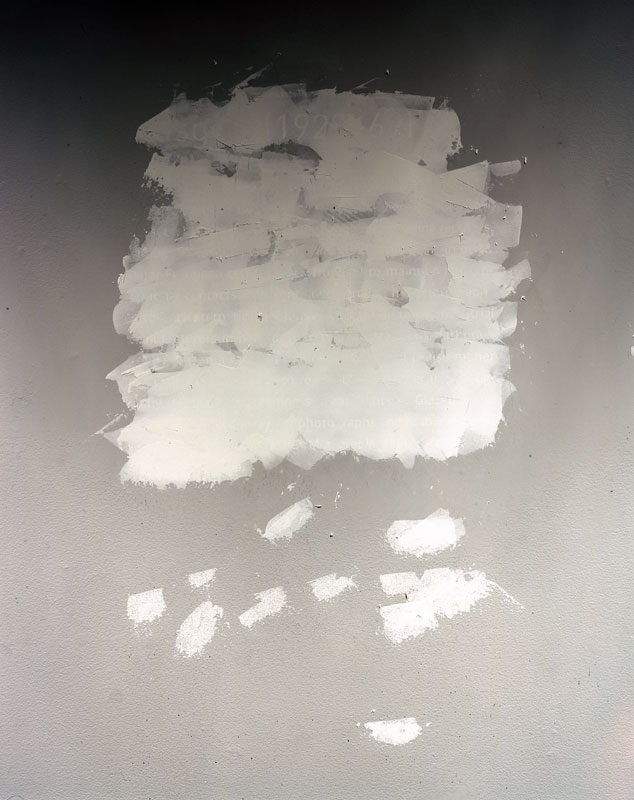Intermezzo, 2014 – present
Intermezzo is an ongoing series that explores art galleries and museums in the intervals between exhibitions. The birth of this project was a misunderstanding — a silly one — on my part. At Ottawa’s National Gallery, I caught a sideways glimpse of a high, maroon wall with haphazard splashes, streaks, and drags of white across a swath of it. I mistook these marks for an artwork, then very quickly realized that they were an installation technician’s patching marks filling the holes in the wall left by what was now an absent artwork. I became fascinated, initially, by this absence, and the traces left behind by artworks. Over time, the project has become more encompassing, considering also the preparation of spaces for shows that are yet to be. These spaces are filled less with traces, and more with a sense of unknown potential.
My personal history — working in these spaces as an installation technician, and my time spent in them as an artist — inflects the comfort with which I haunt and, meditatively, document them. These photographs are documents portraying spaces not meant to be seen by the public, and as images they aspire to provoke contemplation.
Ultimately these vacated spaces, protean by nature, become, to quote John Cage’s description of Robert Rauschenberg’s White Paintings, “airports for … lights, shadows and particles.” This work continues my exploration of interstitial spaces and the idea of threshold. The semi-abstract images become vacuums into which the viewer may freely project meaning.



